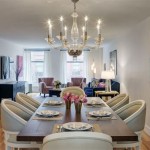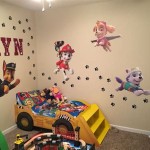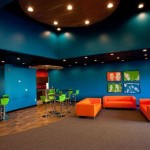How To Decorate A Teenage Girl's Room
Decorating a teenage girl's room presents a unique opportunity to create a space that reflects her evolving personality and provides a comfortable and functional environment. This process requires careful consideration of her interests, needs, and the available space.
Initial Planning and Collaboration: Begin by discussing the project with the teenager. Understanding her preferences, style aspirations, and functional requirements is crucial. Consider creating a mood board together, collecting images from magazines, websites, and social media platforms. This collaborative approach ensures the final outcome aligns with her vision and fosters a sense of ownership.
Color Palette Selection: Choosing a color palette is a foundational step. While vibrant colors can be energizing, softer hues promote relaxation. Exploring various color combinations helps establish the overall ambiance. Consider the room's size and natural light when selecting colors. Lighter shades can make a small room appear larger, while darker tones can create a cozy atmosphere in a spacious room. Monochromatic schemes offer a sophisticated look, while complementary colors create a dynamic contrast. Don't be afraid to incorporate patterns and textures to add depth and visual interest.
Furniture Arrangement: Functionality is paramount. The room should accommodate sleeping, studying, and socializing. A comfortable bed, a well-designed study area, and ample storage solutions are essential. Consider the room's layout and traffic flow when arranging furniture. Positioning the bed strategically can create a focal point, while ensuring easy access to other areas. A desk placed near a window provides natural light for studying. Incorporating multi-functional furniture, such as a storage ottoman or a daybed with drawers, can maximize space utilization.
Wall Decor and Personalization: Walls offer a blank canvas for self-expression. Framed artwork, posters, photographs, and wall decals reflecting the teenager's interests can personalize the space. Creating a gallery wall allows for a curated display of favorite images and artwork, which can be easily updated as her interests evolve. Shelves provide space for displaying books, collectibles, and personal mementos. Consider using removable wallpaper or wall decals to create an accent wall, adding a touch of personality without permanent commitment.
Textiles and Soft Furnishings: Incorporating textiles adds warmth and comfort. A cozy rug defines the space and provides a soft surface underfoot. Throw pillows and blankets in various textures and patterns add visual interest and create a welcoming atmosphere. Curtains or blinds provide privacy and control the amount of natural light entering the room. Selecting fabrics that complement the overall color scheme ensures a cohesive look.
Lighting Solutions: Proper lighting is essential for functionality and ambiance. A combination of ambient, task, and accent lighting creates a layered and balanced illumination. A ceiling fixture provides overall illumination, while a desk lamp offers focused light for studying. Table lamps and string lights create a warm and inviting atmosphere. Incorporating dimmer switches allows for adjustable lighting to suit different moods and activities.
Storage and Organization: A clutter-free environment promotes productivity and relaxation. Incorporate a variety of storage solutions to keep belongings organized. Drawers, shelves, and storage bins provide designated spaces for clothes, books, and other items. Utilizing vertical space with wall-mounted shelves or a tall bookcase maximizes storage capacity. A designated area for storing school supplies and other essentials helps maintain an organized study space.
Creating Zones for Different Activities: Dividing the room into different zones enhances functionality. A dedicated sleeping area, a study zone, and a relaxation or social area cater to different needs. Using area rugs, furniture placement, or room dividers can visually separate these zones. This approach creates distinct spaces for different activities, promoting focus and relaxation.
Incorporating Hobbies and Interests: The room should reflect the teenager's passions. Incorporating elements related to her hobbies and interests personalizes the space. A music lover might appreciate a dedicated area for playing instruments or displaying vinyl records. An artist might benefit from an easel and a wall for displaying artwork. A bookworm might enjoy a comfortable reading nook with a bookshelf and a cozy armchair. Integrating these elements creates a space that reflects her individuality and fosters creativity.
Budgeting and Resource Management: Establishing a budget helps manage expenses. Prioritizing essential items and exploring cost-effective alternatives ensures the project stays within budget. Repurposing existing furniture or accessories can save money and add a unique touch. DIY projects, such as painting furniture or creating artwork, offer opportunities for personalization and cost savings.

Pin On Fun Furniture Ideas

Pin On For The Home

50 Kids Room Design Ideas Amazing Bedroom By Livspace

7 Kids Room Decorating Tips To Create A Fun Space

7 Kids Room Decorating Tips To Create A Fun Space

How To Arrange A Compact Teen Bedroom Houzz Ie

Teen Girl S Bedroom Progress Orc Week 2 A Heart Filled Home Diy Decor

A Teenage Girl S Bedroom Makeover

These 5 Homes Show Us Best Interior Decoration For Flats In Bangalore

Top 20 Teen Girls Bedroom Curtains Ideas S For Teenager Room
Related Posts







